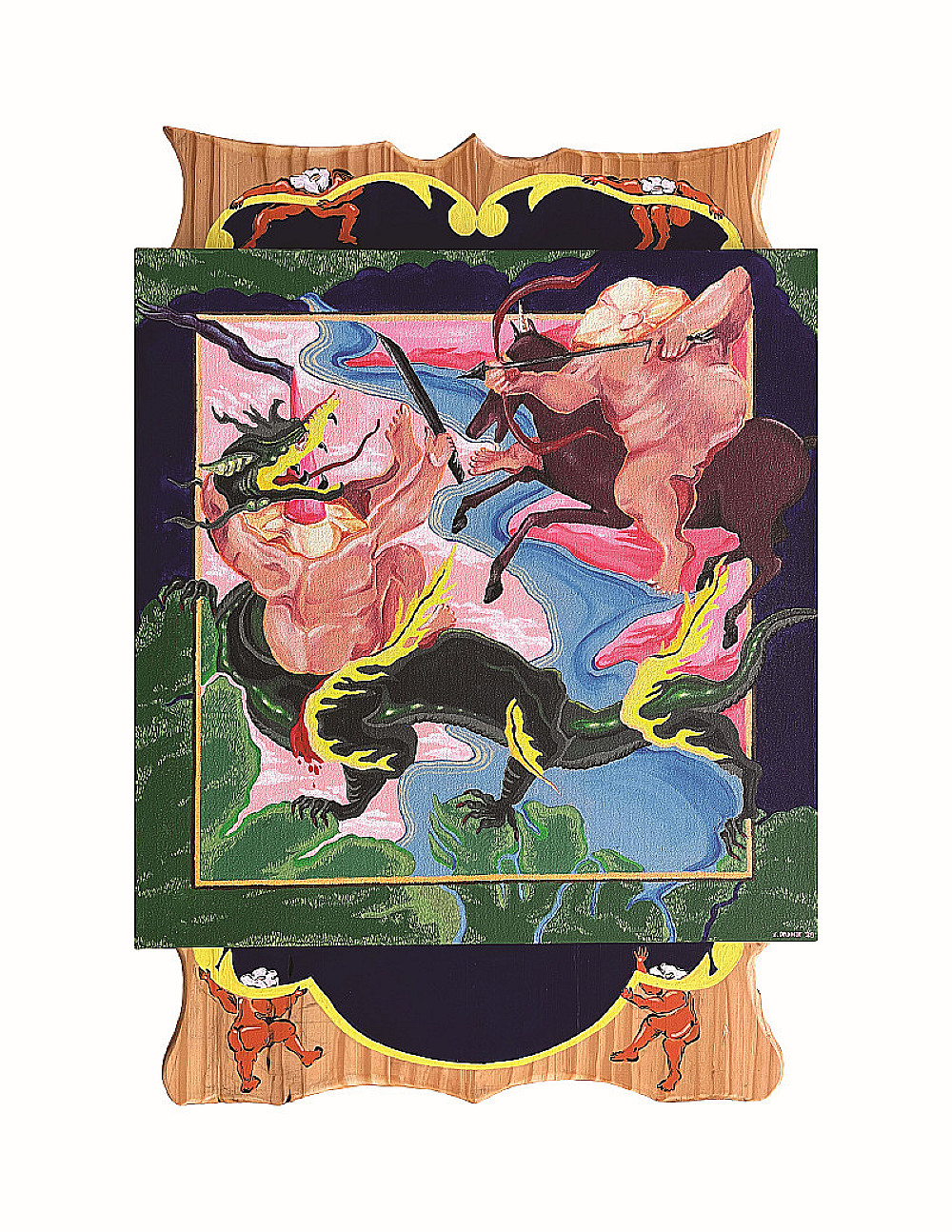
Published 12 November 2025 in Gallery Conversations
By Petra Peppler
1. What kind of “scape” do you think your piece creates—maybe a mindscape or battlescape?
I’d say it sits somewhere between a battlescape and a mindscape. The scene looks like a fight, but it’s really more about what’s happening inside a person. The figures blend into each other, so you can’t quite tell who’s winning or losing, and that makes it feel like the conflict is happening within one shared space. It becomes a landscape of mixed emotions, tension, tenderness, confusion, even humour, rather than a straightforward battle. It becomes a landscape of rehearsal and re-enactment, where the boundaries between cause and consequence, self and opponent, remain unstable.
2. The props blur the line between play and struggle. How do you see them shaping the viewer’s emotional landscape?
The carved props function like fragments of a story left deliberately unresolved. Their scale and materiality, small, wooden, almost toy-like, invite a sense of familiarity and play, but their implied histories introduce a quiet unease. By existing somewhere between relic and prop, they guide viewers into an emotional space where conflict is softened into suggestion rather than spectacle.. The objects are meant to invite people to imagine what happened before or after the moment in the painting, something between curiosity and unease. The objects nudge the viewer toward imagining what precedes and follows the depicted moment, prompting a subtle, intimate moment between empathy, curiosity, and discomfort. The ambiguity helps form an emotional landscape where play becomes a tool for understanding vulnerability, allowing internal conflict to be seen and processed more tenderly.
3. Your statement mentions “the instability of victory.” How does that connect to the curator’s idea of multiple “scapes”?
The idea of “instability” fits really well with the idea of shifting scapes. In the work, victory never feels solid. There’s always a sense that the roles could flip, or that both sides might be losing and winning at the same time. Every triumphant gesture contains its own collapse, and every defeat holds the possibility of redefinition. That mirrors how the piece moves between different kinds of landscapes: the emotional space, the imagined battlefield, the decorative frame, and the props that spill out into real space. The shifting boundaries between these “scapes” reflect how certainty erodes when every viewpoint carries its own contradiction. In this sense, instability becomes not a failure of resolution but the condition through which each layer of the work remains alive and open to reinterpretation.